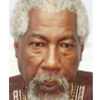ON March 13, 1979, Cheddi Jagan and the People’s Progressive Party (PPP) were 15 years in opposition after the 1964 electoral coup that robbed them out of continuing in office after repeated re-election from 1953.
That Tuesday morning, the world awoke to the news of the first genuine people’s revolution against a fascist dictatorship that had been running Grenada since Independence from Britain in 1974.
The PPP and Grenada’s New Jewel Movement (NJM) had developed strong but quiet ties as fraternal English-speaking Caribbean Left parties, which extended, in Guyana, to Walter Rodney and the Working People’s Alliance (WPA).
The then ruling People’s National Congress (PNC) strongly embraced the NJM’s revolution, and the Guyana Government played an important and quiet role, helping the revolution defend itself in its first year.
Indeed, when the Revolution’s first anniversary celebrations took place in 1980, Cheddi Jagan represented the PPP, and Walter Rodney and Eusi Kwayana represented the WPA.
But there were also several other Guyanese living and working in Grenada as volunteers or fugitives from political repression, most of whom are still alive, but will remain nameless (for now).
The PPP and the WPA were discussing, at the time, the PPP’s proposal for a Patriotic Coalition for Democracy (PCD), and the hope was that the anniversary conference would have created the conditions and atmosphere for positive reception by the then ruling PNC. But it never happened.
Instead, Rodney was assassinated just over three months later in Guyana, in one of the most ignoble acts of murder of a world- respected political figure and intellectual known to this part of the world.
The PPP was 19 years in unelected opposition when the Grenada Revolution committed suicide and was buried by the US invasion, with American jackboots laced with Caribbean ties, and would persevere for another nine years before completing the 28-year cycle with the 1992 election victory.
During his four years as President, and Janet’s nearly two years, while neither completed an entire five-year term, both left their clear marks on the office. And neither joined the chorus of casting blame for Bishop’s death; instead, always seeking to better understand the processes that could have led to such a dangerous split in a united progressive and revolutionary movement.
The PPP had experienced a similar costly split in 1964, and, 19 years later, they’d seen another sorry example of the sheer cost of undervaluing the importance of addressing internal political differences honestly and early enough.
The PPP has survived, but not the NJM.
Neither the PPP nor the PNC are the same after the Jagans and Forbes Burnham, but so is Guyana today, where neither dreamed of before their final trips on slow boats along the river of no return.
Ex-President and former PPP General Secretary Donald Ramotar will this evening join the Jagans’ daughter, Nadia Jagan-Brancier, Dr. Patricia Mohammed, and Susan Wasserman to remember Janet, and Ramotar can be expected to wax warmly as he recalls those aspects of his best memories of the lady who was always much more than just Cheddi Jagan’s wife.
The actual anniversary of her death is two weeks away (March 28, 2009), but Janet Jagan can be celebrated any and every day, as the imaginative thinker she also was beyond the politics her life was measured by.
A celebrated writer of stories for children, my favourite children’s book by Janet features The Alligator Ferry, about an unlikely collaboration between three unlikely animals to cross the Berbice River, and a clear illustration of the sheer possibilities that can arise from cooperation to overcome common challenges.
Another of my favourite books of Janet’s children’s stories is one called, ‘When Grandpa Cheddi was a boy’, in which she offers children glimpses of her husband and lifelong partner that no other writer could have seen and shown like she did.
And then there was her close, long and quiet, but quite strong relationship with the late Claudette Earle at The Guyana Chronicle, who she would often consult on touchy social and political issues relating to women and children in particular, but also about journalism reporting, and the difference between the two.
One of my fondest memories of ‘Comrade Janet’ was flying to Saint Lucia with her as President, with Foreign Affairs Minister Clement Rohee, and Foreign Affairs Ministry Director-General Elisabeth Harper and others to the special CARICOM Summit in Saint Lucia hosting Nelson Mandela.
Then Opposition Leader Desmond Hoyte was also invited to Saint Lucia to discuss the PNC’s relentless political rejection and violent pursuit of the removal of Janet Jagan as President, and the sideline meeting with other CARICOM leaders in Castries leading to the eventual peacemaking Herdmanston Accord.
I also subsequently had the pleasure of joining then Prime Minister Dr. Kenny D. Anthony, and Jamaican Prime Minister, P.J. Patterson at its presentation to the PPP and PNC (and other major political players) at Herdmanston House in Georgetown, all of which ended with the republic’s first elected lady President opting to allow the party to invest in its medium and long-term future in its youngest star, Bharrat Jagdeo.
Jagdeo would take office from August 11, 1999, to December 3, 2011, Janet living for nine of those years to witness the correctness of the party’s investment in a young leader, fresh back home from studying economics and political science on a PPP Pioneer’s scholarship in the then Soviet Union, politically untainted, religiously open, and with an impressive record, first at the State Planning Secretariat, then as Finance Minister.
Had it not been for the PPP’s term-limit concession to preserve peace, Jagdeo would easily have won a third term, but, by then, with two terms in office in his back pocket, and more than a decade adjusting, as a young adult, to the life he’d never lived, growing up in Guyana.
Jagdeo only served for one year as Finance Minister under Dr Jagan’s presidency (1995-96) before Cheddi died, but his appointment to the position was with the President’s support and blessings, based on his performance in handling the republic’s domestic and international financial affairs, and ensuring it dovetailed with Dr. Jagan’s own world view in pursuit of building Guyana as part of the New Global Human Order he pursued at the United Nations and the Non-Aligned Movement.
My last meeting with Cheddi was on February 14, 1996, Valentine’s Day that year, when he sent his security detail to extract me from The Mirror to join him for “a meeting” at the National Park that turned out to be a long and tiring walk (for me) twice around the park as he discussed the “strategic matter” with the comparatively much younger me breathlessly trying to keep up and shut up, neither of which was possible, my tongue actually hanging out of my mouth as I boarded the vehicle to return to Ruimveldt.
I never thought it would have been my last meeting with Comrade Cheddi, and nobody expected it when he collapsed a few days later, and never revived.
But both Janet and Cheddi will be revived tonight when another of their worthy successors in the Presidency of the Republic, Donald Ramotar, who virtually grew up with them at Freedom House, the PPP’s headquarters for decades, and also became, like them, the party’s GeneralSecretary.
What would have been their positions on Guyana with Oil & Gas today? And where would they have stood on the Russia-Ukraine conflict?
We’ll never know from them, but their fingerprints will always remain on PPP policies, and their footprints will always remain embedded in the sands of Guyana’s endless time.
And, just like their support for the development of the Civic component paid off politically and electorally for the PPP, their joint influence on the party they spent their lives building and leading will continue to be reflected in the main policy decisions of the PPP today, under President Dr. Irfaan Ali, and General Secretary Jagdeo, another two towering presidents of the republic, by any measure.



.jpg)










